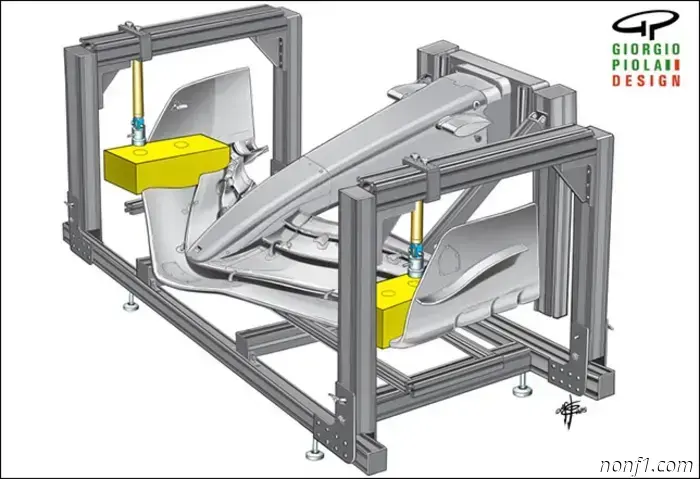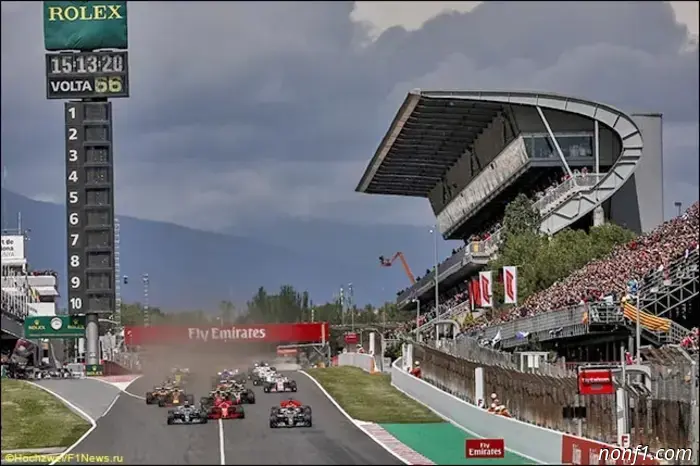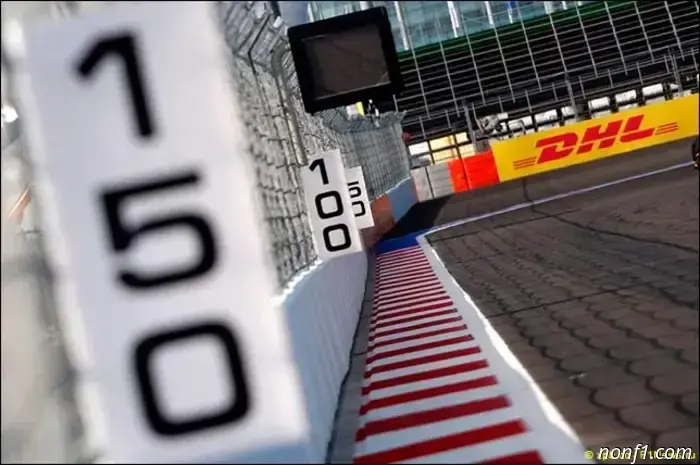
Nicholas Tombasis on tougher flexibility tests
Since the Spanish Grand Prix, the FIA has been tightening tests for unacceptable flexibility of the front wings under load to match the tightening of such tests for the rear wings introduced in China and Japan. The FIA Director of Single-seater Racing, Nicholas Tombasis, spoke about the reasons and objectives of these changes.
Nicholas Tombasis: "In the second half of the 2024 season, we came to the conclusion that we need to slightly tighten the load tests for the elements of aerodynamics for the 2025 season.
The 2025 rules were developed to combat the "mini-DRS" effect, which was discussed last fall. We have been using new tests for the rear wing elements since the beginning of the season, but it soon became clear that this was not enough, and they were tightened during the championship.
The situation was similar with the front wings. Last year, at the Belgian Grand Prix and after it, we installed video cameras on the front fenders of the cars and also came to the conclusion that the tests needed to be tightened. But the decision was made quite late, it seemed to us that if we introduced additional tests at the beginning of the season, the teams would have to develop the wings anew, which would lead to additional costs. Therefore, we decided to postpone this rule change until the Spanish Grand Prix."
The test parameters are defined in the amendments to Articles 3.15.4 and 3.15.5 of the 2025 Technical Regulations, which limit the flexibility of the planes and flaps of the front wing.
The first version stated that when a load of 100 kg is symmetrically applied to both sides of the machine, the vertical deflection should be no more than 15 mm, and when a load is applied to only one side, no more than 20 mm.
Starting from the Spanish Grand Prix, when the load is applied symmetrically, the vertical deflection should not exceed 10 mm, and when the load is applied only to one side – 15 mm. The permissible flexibility of the front wing flaps at a load of 6 kg has been reduced from 5 to 3 mm.
Although this decrease may seem insignificant, the teams had to seriously increase the rigidity of the structure, which should close this issue at least until the end of the season.
Nicolas Tombasis: "The FIA may add additional flexibility or stiffness tests when there are concerns that a certain area may be overused, but we hope that we won't have to change anything else this year.
We check the teams at different points in the season, ask them to bring certain components and test them separately, and sometimes directly on the car. We often conduct tests in a closed park – on the Saturday after qualifying or on Sunday morning, because teams cannot change anything in a closed park. Sometimes we do post-race checks if we think there's a reason to do so. We are talking about static load tests, as defined in Article 3.15 of the Technical Regulations.
There are areas where the tendency to use flexible elements is less pronounced, and we can soften the tests at some point, but in general the philosophy remains the same. We must remain vigilant and continue testing. In fact, we are already determining the test loads for next year. If we have to tighten them again in order to preserve justice, then we will do it."
Other articles
 Spanish Grand Prix: Comments before the stage
Comments from drivers and teams before the Spanish Grand Prix...
Spanish Grand Prix: Comments before the stage
Comments from drivers and teams before the Spanish Grand Prix...
 Spanish Grand Prix: Track and statistics
The Spanish highway is considered a benchmark for evaluating the effectiveness of cars...
Spanish Grand Prix: Track and statistics
The Spanish highway is considered a benchmark for evaluating the effectiveness of cars...
 Spanish Grand Prix: Stage Preview
I wonder if Fernando Alonso will be able to earn his first points of the season in Spain.
Spanish Grand Prix: Stage Preview
I wonder if Fernando Alonso will be able to earn his first points of the season in Spain.
 Spanish Grand Prix: Round numbers
Possible anniversary achievements in the upcoming Grand Prix...
Spanish Grand Prix: Round numbers
Possible anniversary achievements in the upcoming Grand Prix...
Nicholas Tombasis on tougher flexibility tests
The FIA Director of Single-seater Racing, Nicholas Tombasis, spoke about the reasons and objectives of these changes.
